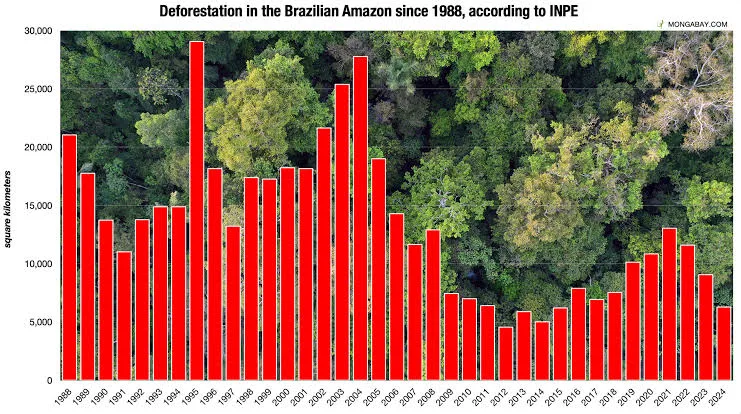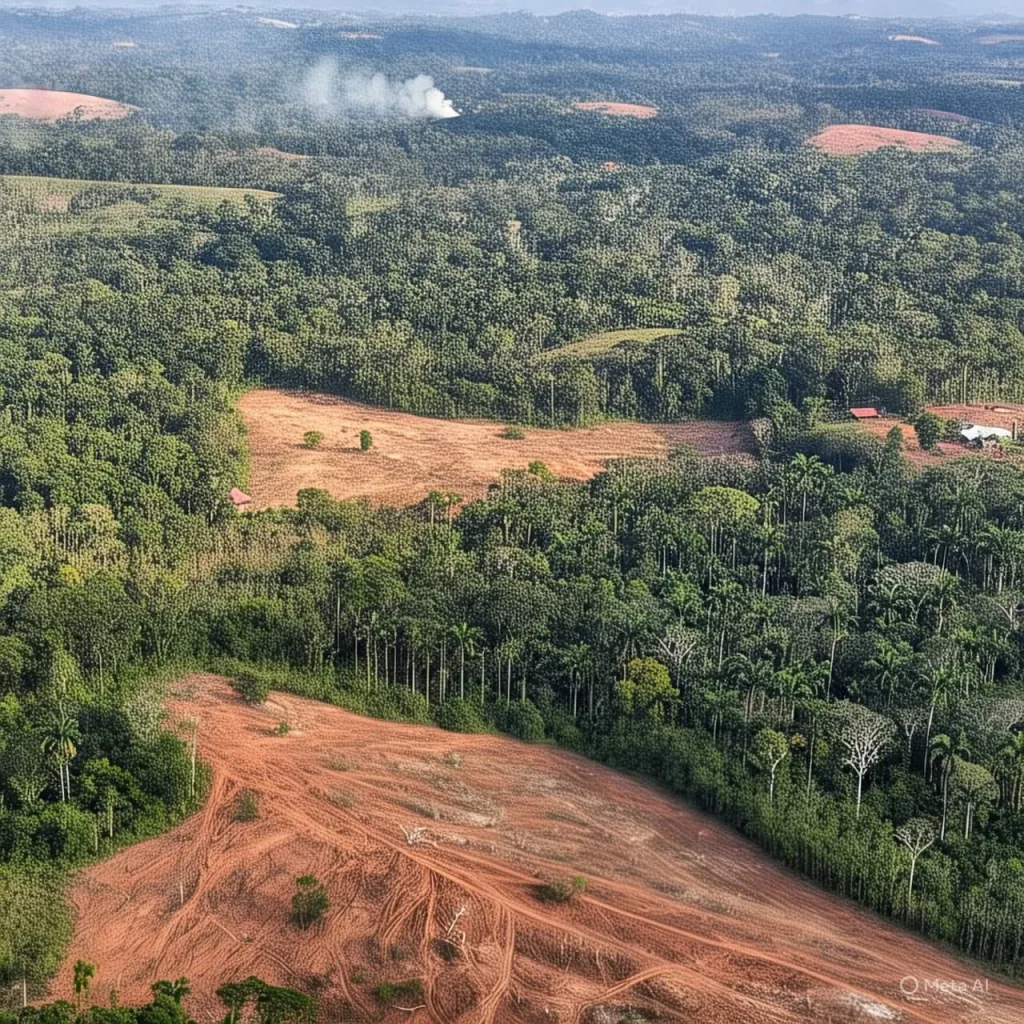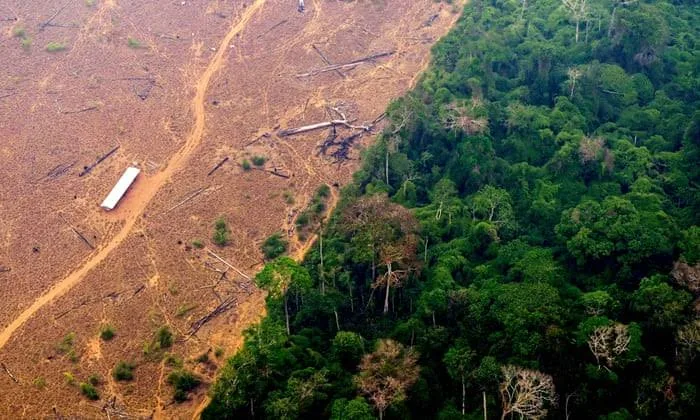Brazil has made notable progress in reducing deforestation, with annual deforestation falling by 32.4% in 2024 compared to the previous year.
According to recent data, a total of 1.24 million hectares of land were deforested in 2024, marking a significant decrease in the loss of natural forests.
Brazil saw a significant 32.4% drop in deforestation across its biomes in 2024 compared to the previous year, according to MapBiomas, a network of NGOs, universities, and tech companies. This marks the second year of decline since 2019, when the group started publishing regular deforestation alerts.

Deforestation Trends by Biome:
- Amazon: 16.8% decrease
- Cerrado: 41.2% decrease
- Caatinga: 13.4% decrease
- Pantanal: 58.6% decrease
- Pampa: 42.1% decrease
- Atlantic Forest: 2% increase
Despite this progress, Brazil still lost 1,242,079 hectares (3,069,244 acres) of native vegetation in 2024. Over six years, cumulative deforestation reached 9,880,551 hectares (24,415,373 acres), roughly the size of South Korea. For the most current and detailed information, consider visiting Global Forest Watch.

The Amazon and Cerrado together account for 82.9% of that total. According to the report, agribusiness is the main driver of deforestation, responsible for 97% of native vegetation loss in recent years.
The state of Maranhão, in northeastern Brazil, topped the deforestation ranking in 2024, with 218,298 hectares (539,426 acres) lost. Even so, the state saw a 34.3% reduction in its deforestation rate compared to 2023. Goiás, in the country’s Center-West region, recorded the greatest improvement, with a 71.9% reduction in native vegetation loss year over year.
In two-thirds of Brazil’s Indigenous Lands, MapBiomas researchers found no deforestation events. In the remaining 33%, at least one deforestation alert was issued. In total, 15,938 hectares (39,384 acres) of native vegetation were lost in Indigenous territories nationwide – representing a 24% decrease between 2023 and 2024.
The MapBiomas report is based on consolidated data from several deforestation monitoring systems in Brazil, including DETER, operated by the National Institute for Space Research (INPE), and the Deforestation Alert Systems (SADs) run by Imazon and SOS Mata Atlântica–ArcPlan. Analysts use alerts from these systems to generate reports featuring high-resolution satellite images that reveal before-and-after views of deforested areas.
The project does not explain the reasons behind the observed results, but aims to support both private and governmental institutions in reducing deforestation in Brazil and promoting actions for conservation and the sustainable use of land.
Major achievement in deforestation
- Total Deforestation:
- 1.24 million hectares of land were deforested in 2024, down from 1.83 million hectares in 2023.
- Biome-Wide Reduction:
- Almost every biome in Brazil saw a decline in deforestation, contributing to the overall reduction.
- Historical Context:
- This decline brings the total area of natural forests lost in Brazil to 15% over the past 38 years, with 87.6 million hectares of natural forests cut down between 1985 and 2022

Regional Variations
- Amazon Biome:
- The Amazon saw a significant drop in deforestation, with the area cleared between August 2023 and July 2024 being the lowest in the last 9 years.
- State-Level Performance:
- States like Rondônia and Mato Grosso showed notable reductions in deforestation, with drops of 62.5% and significant decreases, respectively.
Implications
- Environmental Impact:
- The reduction in deforestation is a positive step towards preserving biodiversity, maintaining ecosystem services, and regulating the climate.
- Agricultural Expansion:
- Most deforestation in Brazil is driven by agricultural expansion, with 95% of natural forest conversion being for pasture or crop cultivation.
- Conservation Efforts:
- Continued conservation efforts and sustainable land-use practices are crucial to maintaining this trend and protecting Brazil’s rich natural heritage .
